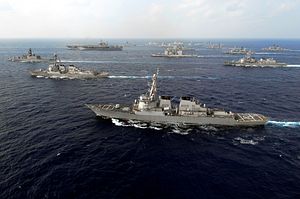Representative Randy Forbes of Virginia has set the naval world alight with a pair of letters on U.S. naval and security policy in the Pacific. The first letter, addressed to Chief of Naval Operations Jonathan Greenert, called for the development of a new maritime strategic posture. The second, addressed to Army Chief of Staff Ray Odierno, argued that the United States Army should pursue the development of an anti-access system of systems to counter Chinese technology in the Western Pacific.
The most interesting part of the latter argument may be the suggestion that the United States facilitate the spread of anti-access systems to regional states. The United States has already determined to step up arms sales to Vietnam, and has long had a strong defense relationship with the Philippines, not to mention Japan and South Korea. Vietnam in particular has developed the foundation of an anti-access system, and has pursued the possibility of purchasing advanced BrahMos cruise missiles from India.
The idea of supplying the various regional states that have territorial disputes with China has a great deal of appeal. A China that fears the military capabilities of its neighbors is easier to deter, especially as the commitments of these neighbors are more credible than that of the United States. The potential for an integrated system is even more interesting, giving the United States and its allies a major geographical advantage over China.
But there are problems.
The issue with respect to the proliferation of anti-access/area denial systems is not “Will some countries purchase and develop them?” but rather “How fast will countries deploy them, and how extensive will those systems be?” A policy that engages in conscious, if selective, proliferation of cruise missiles and other anti-access technologies will inevitably render the oceans more dangerous. The chances for proliferation increase when technology is made more widely available, and when norms makes weapons seem more appropriate.
We should also recognize that the alliance system in the Asia-Pacific does not resemble NATO during the Cold War. The United States lacks the same mechanisms for integrating capabilities across the alliance, and different partners have (often dramatically) different interests. Perhaps most importantly, these allies have widely varying taste for moves that increase tension with China. Without substantial agreement on the nature, extent, and proper means of managing the Chinese threat, any coalition-based system of systems would likely find itself with major gaps in case of crisis.
I’ve argued before that China’s pursuit of A2/AD technology runs the risk of backfiring in the long term, and I’ve suggested that China should take great care in exporting such systems to foreign countries. The same considerations apply to the United States. Making the East and South China Seas more dangerous for everyone may, in the fullness of time, become a sensible response to the growth of Chinese power. But such a policy is fraught with danger for the United States, as well.

































